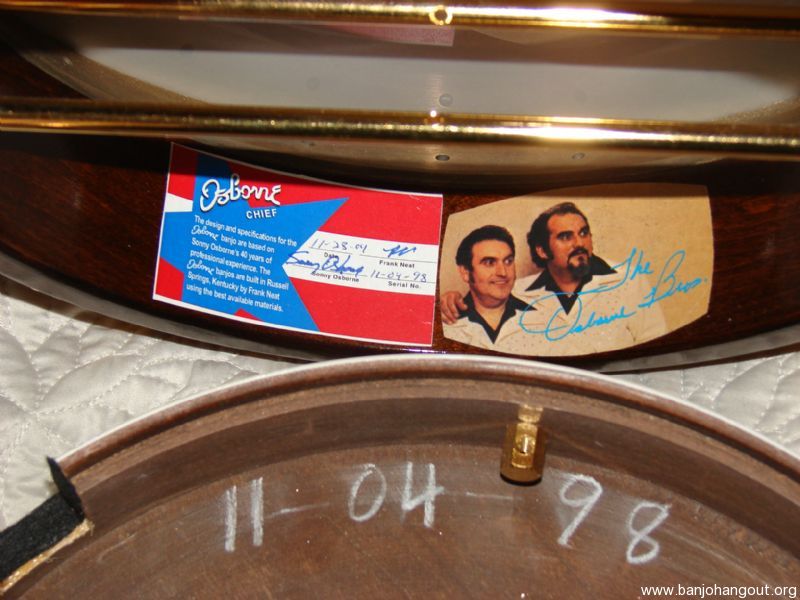

Here are some things I've been told about it, why it's the "best": 1.

I'm still probably a week or two from getting it in. Do I understand that you move these by unscrewing and rescrewing them? Is that really faster or on a par with a Shubb, Dunlop, or Kyser? And when not in use you move it behind the nut? I would think that keeping it securely behind the nut without rattling would require enough tightening to potentially raise the pitch of the strings. I think I have a Paige banjo capo somewhere. If someone (Joseph Hanna?) has any tips on using this thing with fewer problems I'd like to hear them. I like that I can put it at the end of the headstock, but have had difficulties putting it on in a hurry without either pushing the strings sideways and out of tune, or getting an outer string in the corner by the hinge where there is no rubber. More recently I picked up a Dunlop, which seems similar to a Kyser to me. Remembering to put it back in the case is sometimes a problem. It seems to do a reasonably good job, requires some retuning and I keep it in my back pocket until I need it. Maybe I should find that and start using it. I think I have a capo just like that in a box of old gear from the '70s. I went to look at the Elliot expecting something revolutionary-looking. I read this thread with interest as a guy whose gigging is mostly playing acoustic guitar these days and who uses a capo on about 10% of the material. Certainly as consistent in the tuning arena as a Shubb.īut.if all of you Elliot users are REALLY representing that this capo honestly eliminates tuning problems and somehow sounds better (although I've yet to hear a pragmatic explanation as to why it sounds better)I'll buy one this week.įor $140.00 by golly this better be good.

Kyser's get bashed here (and elsewhere) relentlessly but I've found that once you figure it out it does remarkably well. I've NEVER and I mean NEVER met a capo that doesn't effect the tuning to some degree or another and truth be told once you learn the idiosyncrasies of each I can't honestly say one is any better than another. I've also gotta make sure the pre-amp is muted and somehow mentally re-group for the next tune. I've got that obstacle not to mention a duo partner who seldom has time and or patience to sit idle while I fiddle. That not to mention sometimes I go from 1st fret to 7th and back to open with 30 seconds between each tune. 28 out of 30 songs in a listening environment. Like I said earlier my whole gigging life is wrapped up in getting a capo moved and re-tuned quickly. You owe to yourself to at least experience one in person (you will find a lot at flat picking competition and acoustic music festivals).

Whether that value proposition resonates with you. But objectively, the Elliot is precision made from high quality materials by machinists that have specialized in designing and making capos for a long time and who have received (and incorporated) a lot of feedback from demanding users into their products. There is no muffling.again it may be due to the small footprint and good just does a great job of shortening the string length and raising the pitch.Īt some point, all such decisions become subjective. Place it, tighten the screw and the guitar is in tune, clear and bright. "Better sound"=No learning curve in my experience. "Less in the way"= it is physically smaller than any other capo I have used (because of the materials and design).it isn't obtrusive at all in the way(s) that I play and grip the neck.making it "better" to me than other capos I've used. There again if I went out and spent $140.00 on a capo only to find it wasn't any better than my Shubbs.I'd be ticked Thoughts on this? I'd be duly impressed if in fact the Elliot was better. Can you sell me on this feature?Īs far as not deadening the strings as much as the Shubb I gotta say of the countless capo's I have the Shubb is NOTICEABLY the absolutely best of the bunch at that task. I don't yet see any major difference between how the Elliot contacts the strings than say a Paige or even an NS or Shubb for that matter. If that were a big issue a Kyser would do just fine. No one knows the struggle and pain of getting a capo moved quickly and properly and getting the guitar in tune efficiently enough to not disturb the flow of the set than little old me.įor me personally I gotta discount the "I can keep it on my guitar" as that's just not that important and certainly not worth an extra $120.00. That not to mention the way the set unfolds it often is the case that the capo gets moved virtually every tune. In 30 songs I use the capo on 28 of them. I play for a living and the current duo (the bulk of my work) does some really intricate work. Yea I mean I'm not really trying to be picky here.


 0 kommentar(er)
0 kommentar(er)
